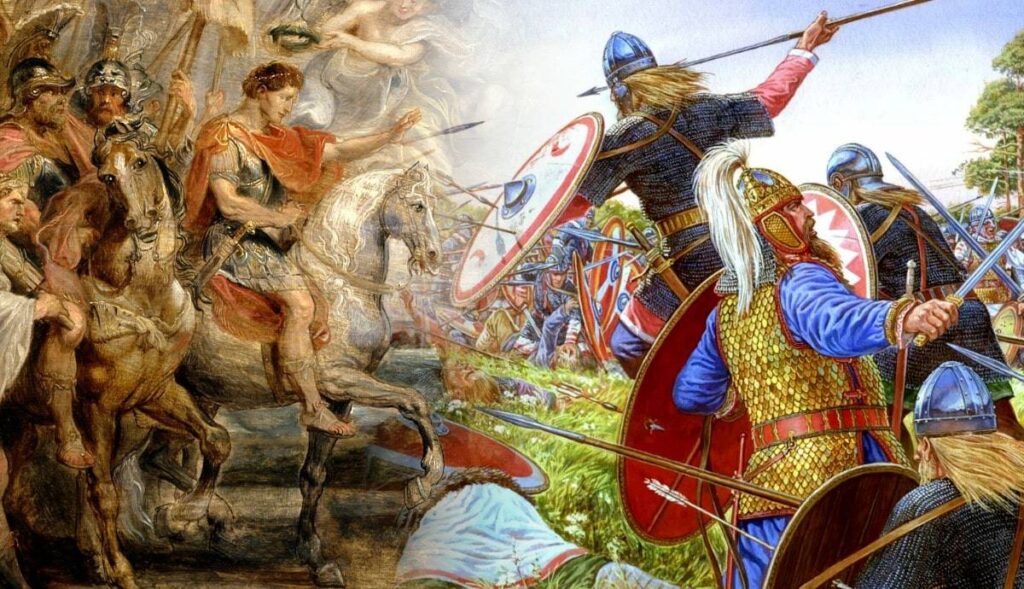The Battle of Cannae, fought in 216 BC between the Roman Republic and Hannibal’s Carthaginian army, is considered a pivotal moment in ancient Roman warfare. This battle showcased Hannibal’s tactical genius as he outmaneuvered the Roman forces led by consuls Lucius Aemilius Paullus and Gaius Terentius Varro. Employing a double envelopment strategy, Hannibal surrounded and decimated the Roman army, leading to a devastating defeat with tens of thousands of Roman casualties. The aftermath of Cannae led to a shift in Roman military strategy, emphasizing caution and siege tactics. Hannibal’s victory solidified his reputation as one of history’s greatest military leaders, leaving a lasting impact on the course of the Second Punic War.
The Battle of Cannae: A Turning Point in Ancient Roman Warfare
The Battle of Cannae, fought on August 2, 216 BC, was a major confrontation between the forces of the Roman Republic and Hannibal’s Carthaginian army during the Second Punic War. It is widely considered one of the greatest tactical masterpieces in military history and a turning point in ancient Roman warfare.
Background
After suffering a series of defeats at the hands of Hannibal, the Romans decided to confront him head-on at Cannae, a small village in southeastern Italy. The Roman army, led by consuls Lucius Aemilius Paullus and Gaius Terentius Varro, outnumbered Hannibal’s forces, but Hannibal’s superior tactics and cunning outmaneuvered the Roman army.
The Battle
At Cannae, Hannibal employed a classic double envelopment strategy, surrounding the Roman army and cutting off their escape routes. The Romans, in their eagerness to engage the enemy, fell into Hannibal’s trap and were quickly encircled. The Carthaginians attacked from all sides, causing mass confusion and chaos among the Roman ranks.
The Romans fought bravely, but they were ultimately overwhelmed by the Carthaginians. The Carthaginians inflicted a devastating defeat on the Romans, with estimates of Roman casualties ranging from 50,000 to 70,000 troops killed, wounded, or captured. The Carthaginians, on the other hand, suffered minimal losses.
Impact
The Battle of Cannae had a profound impact on the course of the Second Punic War and on ancient Roman warfare in general. It demonstrated the importance of strategy, tactics, and adaptability on the battlefield. The Romans learned valuable lessons from their defeat at Cannae, which they would apply in future battles.
After Cannae, the Romans adopted a more cautious and strategic approach to warfare, focusing on attrition and siege tactics rather than engaging the enemy in open combat. This shift in strategy eventually led to the downfall of Hannibal and the Carthaginians.
Furthermore, the Battle of Cannae established Hannibal as one of the greatest military generals of all time. His victory at Cannae showcased his genius in strategy and tactics, solidifying his reputation as a formidable foe to the Romans.
Conclusion
The Battle of Cannae was a turning point in ancient Roman warfare, demonstrating the power of strategy and tactics on the battlefield. It was a crushing defeat for the Romans, but it ultimately shaped their approach to warfare and contributed to their eventual victory in the Second Punic War. The legacy of Cannae continues to be studied and analyzed by military historians and strategists to this day.
